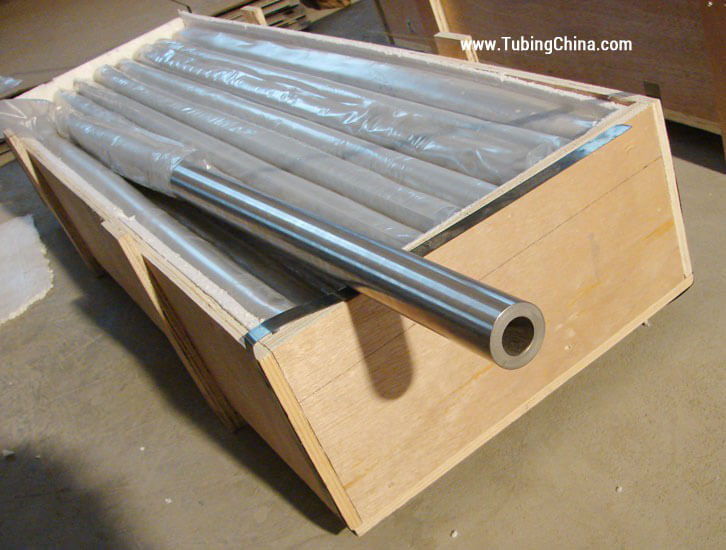Zirconium Zirkonium Zircone
Zirconium is a very strong, malleable, ductile, lustrous silver-gray metal. Its chemical and physical propertiess are similar to those of titanium. Zirconium is extremely corrosion resistant and heat resistant. Zirconium is lighter than steel and its hardness is similar to copper. When it is finely divided, the metal can spontaneously ignite in air, especially at high temperatures. Zirconium powder is black and is regarded as very dangerous fire hazard. Zirconium does not dissolve in acids and alkalis.
Zirconium is used in alloys such as zircaloy, which is used in nuclear applications since it does not readily absorb neutrons. Also used in catalytic converters, percussion caps and furnace bricks. Baddeleyite and impure zirconium (zirconia) are used in lab crucibles.
The major end uses of zircon (ZrSiO4) are refractories, ceramic opacification and foundry sands. Zircon is also marketed as a natural gemstone used in jewelry. The metal also has many other uses, among them in photographic flashbulbs and surgical instruments, to make the glass for television, in the removal of residual gases from electronic vacuum tubes, and as a hardening agent in alloys, especially steel. The paper and packaging industries are finding that zirconium compounds make good surface coatings because they have excellent water resistance and strength.
Standard:
ASTM B551/B551M Standard Specification for Zircone and Zirkonium Alloy Strip, Sheet, and Plate
ASTM B550/B550M Standard Specification for Zirkonium and Zircone Alloy Bar and Wire
ASTM B523/B523M Standard Specification for Seamless and Welded Zircone and Zirkonium Alloy Tubes
ASTM BB658/B658M Standard Specification for Seamless and Welded Zirconium and Zirconium Alloy Pipe
 ASTM B658 ASTM B523 ZR702 ZR705
ASTM B658 ASTM B523 ZR702 ZR705
Zirconium in the environment
Zirconium is not a particularly rare element but because its most common mineral, zircon, is highly resistant to weatering it is only slightly mobile in the environment. Zirconium is more than twice as abundant as copper and zinc and more than 10 times more abundant than lead.
The chief ores are zircon (ZrSiO4), which is mined in Australia, USA and Sri Lanka, and baddeleyite (Zirconium oxide ZrO2) which is mined in Brasil. World production is in excess of 900.000 tonnes per year of zircon, and 7000 tonnes of the metal are produced. The estimated reserves exceed a billion tonnes. Australia, South Africa, India, Sri Lanka and the USA have vast deposits of zircon and zirconia sands.
Health effects of zirconium
Zirconium and its salts generally have low systemic toxicity. The estimated dietary intake is about 50 microg. Most passes through the gut without being adsorbed, and that which is adsorbed tends to accumulate slightly more in the skeleton than in tissue.
Zirconium 95 is one of the radionuclides involved in atmospheric testing of nuclear weapons. It is among the long-lived radionuclides that have produced and will continue to produce increased cancers risk for decades and centuries to come.
Environmental effects of zirconium
Zirconium is unlikely to present a hazard to the environment.While aquatic plants have a rapid uptake of soluble zirconium, land plants have little tendency to adsorb it, and indeed 70% of plants that have been tested showed no zirconium to be present at all.
In addition to resisting Hydrochloric Acid Corrosion HCl at all concentrations and at temperature above the boiling temperature, zirconium and its alloys also have excellent resistance in sulfuric acid at temperatures above boiling and concentrations to 70%. Corrosion rate in nitric acid is less than 1 mil/year at temperatures above boiling and concentrations to 90%. The metals also resist most organics such as acetic acid and acetic anhydride as well as citric, lactic, tartaric, oxalic, tannic, and chlorinated organic acids.
Relatively few metals besides zirconium can be used in chemical processes requiring alternate contact with strong acids and alkalis. However, zirconium has no resistance to hydrofluoric acid and is rapidly attacked, even at very low concentrations.
Zirconium alloys can be machined by conventional methods, but they have a tendency to gall and work harden during machining. Consequently, tools with higher than normal clearance angles are needed to penetrate previously work-hardened surfaces. Results can be satisfactory, however, with cemented carbide or high-speed steel tools. Carbide tools usually provide better finishes and higher productivity.
Mill products are available in four principal grades: 702, 704, 705, and 706. These metals can be formed, bent, and punched on standard shop equipment with a few modifications and special techniques. Grades 702 (unalloyed) and 704 (Zr-Sn-Cr-Fe alloy) sheet and strip can be bent on conventional press-brake or roll-forming equipment to a 5t bend radius at room temperature and to 3t at 200°C. Grades 705 and 706 (Zr-Cb alloys) can be bent to a 3t and 2.5t radius at room temperature and to about 1.5t at 200°C.
Zirconium has better weldability than some of the more common construction metals including some alloy steels and aluminum alloys. Low distortion during welding stems from a low coefficient of thermal expansion. Zirconium is most commonly welded by the gas-tungsten arc (GTAW) method, but other methods can also be used, including gas metal-arc (GMAW), plasma-arc, electron-beam, and resistance welding.
Welding zirconium requires proper shielding because of the metal's reactivity to gases at welding temperatures. Welding without proper shielding (argon or helium) causes absorption of oxygen, hydrogen, and nitrogen from the atmosphere, resulting in brittle welds. Although a clean, bright weld results from the use of a proper shielding system, discoloration of a weld is not necessarily an indication of its unacceptability. However, white deposits or a black color in the weld area are not acceptable. A bend test is usually the best way to determine acceptability of a zirconium weld.
Major uses for zirconium and its alloys are as a construction material in the chemical-processing industry. Applications include heat exchangers (for producing hydrogen peroxide, rayon, etc.), drying columns, pipe and fittings, pump and valve housings, and reactor vessels.
Related References:
Zirconium Zirkonium Zircone
Corrosion Resistance of Zirconium
Physical Properties of Zirconium
Zirconium 702 705 Mechanical Properties
Zirconium 702 705 ASME Allowable Stress
|
